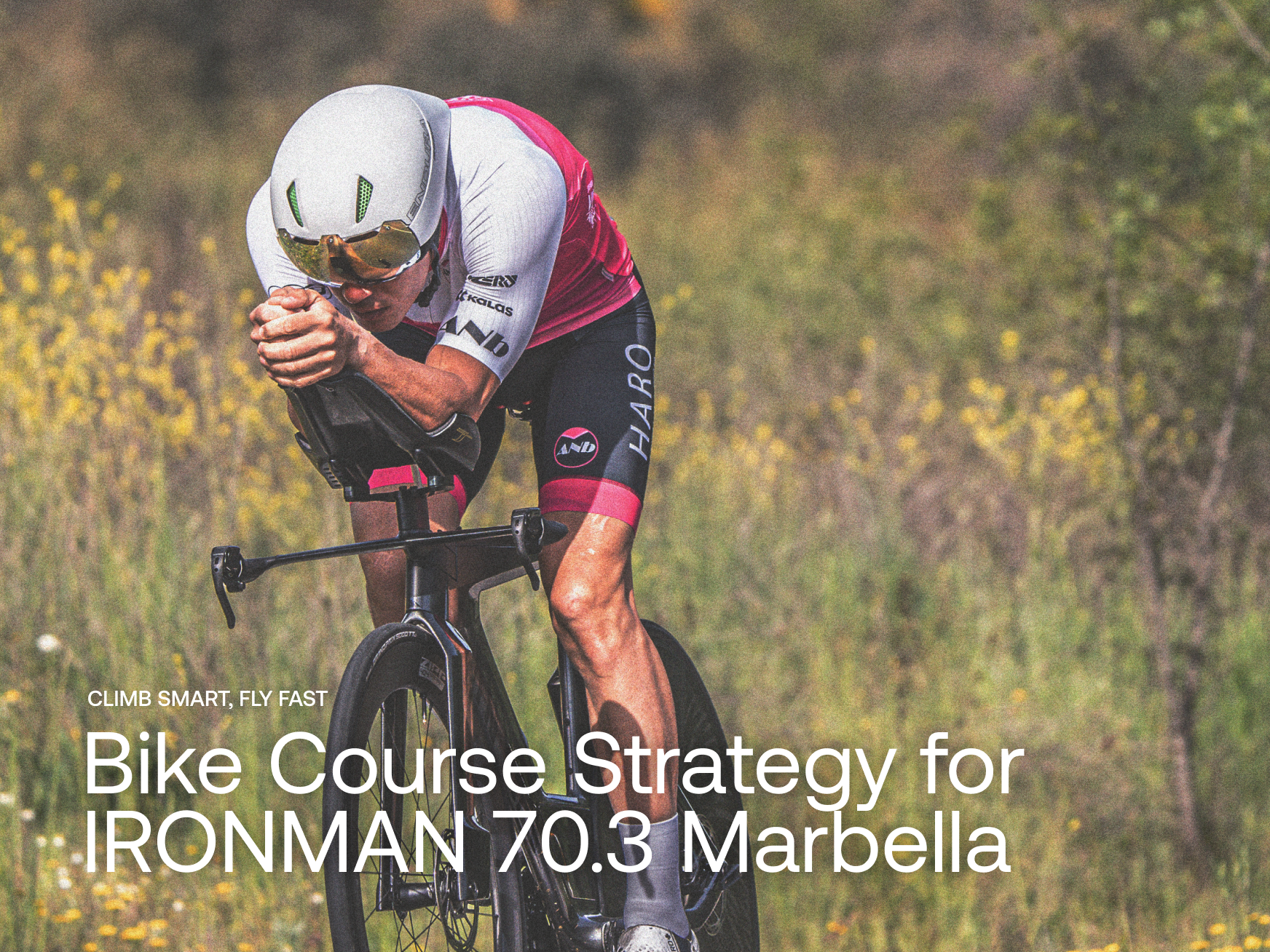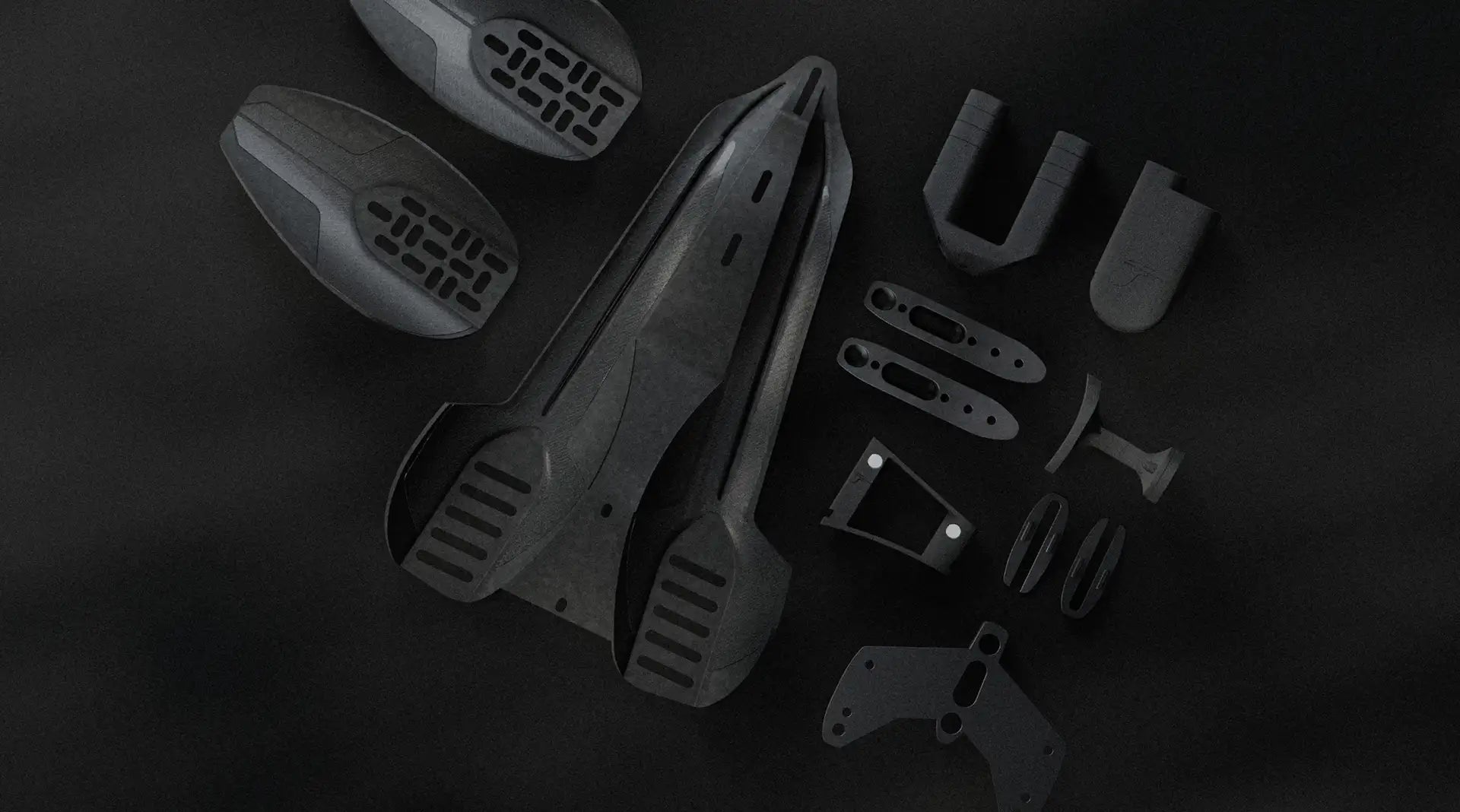Climb Smart, Fly Fast: Bike Course Strategy for IRONMAN 70.3 Marbella


Where watts meet willpower — the 90 km that decide your day in Andalucía.
Marbella doesn’t forgive arrogance — but it rewards precision. The 90 km ZOOT bike course of the 2025 IRONMAN 70.3 World Championship defines who finishes strong and who fades before the promenade. With 1,785 m of elevation gain through the Andalusian countryside, it’s a symphony of climbing, cornering, and control.
From the iconic palm-lined Golden Mile to the twisting ascent toward Ojén, the road never stops asking questions. And your only answers come in watts, cadence, and confidence.
The opening stretch rolls gently along the sea — then the elevation begins. Within the first 15 km, you’ll leave the coast and head inland, tackling the ascent to Ojén, followed by the technical sections toward Monda and Coín. Each climb has its own character: steep ramps, rhythm changes, and deceptive false flats.
Unlike Nice, Marbella’s profile is shorter but punchier — fewer alpine-style climbs, more constant torque management. It’s a course that punishes overgearing and rewards athletes who can modulate power and recover actively on descents.
| Segment | Distance | Elevation | Key Focus |
|---|---|---|---|
| Golden Mile to Ojén | 0–15 km | +520 m | Controlled effort, settle into rhythm |
| Ojén to Monda | 15–35 km | Rolling climbs | Stay aero in transitions |
| Monda to Coín | 35–45 km | Steady incline | Hold FTP 85–90% |
| Descent to Coín valley | 45–55 km | -400 m | Precision braking, aero posture |
| Return climb + descent | 55–90 km | +/-600 m | Rebuild rhythm for the run |
The bike is where time is won — or quietly lost. Your power discipline here determines your marathon legs later. Below, a pacing matrix for 75 kg athletes under 25 °C (typical Marbella micro-climate):
| Athlete Type | NP (W) | IF | Bike Split | Run Target |
|---|---|---|---|---|
| PRO | 260–280 W | 0.82 | 2 h 20–2 h 30 | 3:55–4:05/km |
| SEMI-PRO | 220–240 W | 0.75 | 2 h 40–2 h 55 | 4:35–4:55/km |
| AMATEUR | 180–200 W | 0.68 | 3 h 00–3 h 20 | 5:10–5:30/km |
Masamune Aero Tip: saving 25–30 W through reduced CdA can mean holding the same speed with lower heart rate — preserving glycogen for the run. In Marbella’s rolling terrain, aero consistency is more valuable than raw power.
After cresting at 550 m, the descent rewards control. With coastal humidity and changing road textures, stability is the secret currency. Every time you brake later or corner smoother, you buy seconds without burning glycogen.
The Masamune cockpit offers unmatched stability on these descents — its modular riser system minimizes wobble and keeps your line sharp even in gusts from the Strait of Gibraltar.
Every watt on this course is fueled, not given. Marbella’s Mediterranean sun amplifies dehydration risk — an athlete can lose up to 1.2 L/h under 25 °C. Hydrate before the thirst and synchronize fueling with terrain:
Plan with the Hydration & Fuel Calculator (PDF) to personalize intake by weight, temperature, and duration.
Marbella tempts you to attack — but the athletes who win here pace like surgeons. They climb with patience, descend with precision, and arrive at T2 calm. Every overgear spike costs watts you’ll wish you had at kilometer 15 of the run.
Pro tip: rehearse the descent line on RideWithGPS (GPX route) or import it into Zwift workouts. Familiarity breeds free speed.
| Resource | Link |
|---|---|
| PDF — Bike Course Elevation & Power Planner | Download |
| Hydration & Fuel Calculator (weight × climate) | Download |
| Masamune Assembly — 2-min video | Watch |
| Tetsuo Performance — Strava Club | Join |
“Control the climb. Respect the descent. Let the Masamune do the rest.”
Ride smart, fuel consistently, and bring the Andalusian fire to the finish line.
Keep exploring: Race Overview · Nutrition · Masamune · Assembly

GETTING YOU FASTER
Configure your Masamune